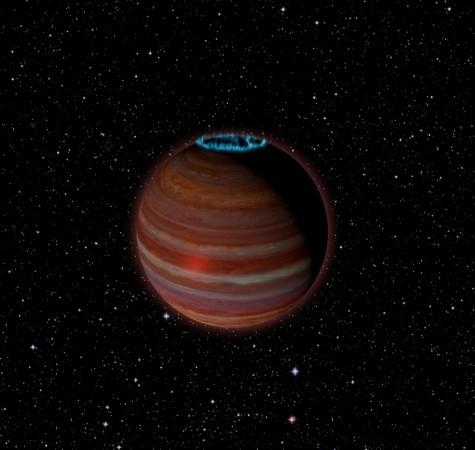Planets are normally attached to a host star which gives it energy and light. And, they are locked into an orbital plane upon which they reside. This is at least how astronomers believed planets worked till they stumbled upon the first ever "rogue planet" that has been simply set adrift in the Milky Way.
Named "SIMP J01365663+0933473", it was first found by astronomers at the National Science Foundation's Karl G. Jansky Very Large Array (VLA), notes the National Radio Astronomy Observatory (NRAO). This finding is the first radio telescope finding of an object the mass of a planet found outside the Solar System.
SIMP is not small; and is about 12 times larger than Jupiter and has a strong magnetic field, say the astronomers. It is simply floating through space without any tethers to a star.
"This object is right at the boundary between a planet and a brown dwarf, or 'failed star,' and is giving us some surprises that can potentially help us understand magnetic processes on both stars and planets," said Melodie Kao, from the Arizona State University who led this study.
Brown dwarfs, explains the NRAO, are celestial objects that are too big to actually be considered planets, yet not big enough to sustain the nuclear fusion that keeps stars alive in their cores. The first ever sighting of a Brown Dwarf happened as late as 1995. They were also originally not thought to emit radio waves. However, in 2001, VLA detected radio flaring in one and it revealed strong magnetic activity.

Studies that followed it demonstrated that certain brown dwarfs display strong auroras, similar to the ones seen in the Solar System's giant planets. However, solitary brown dwarfs do not have a solar wind from a nearby star to interact with. How auroras are caused in brown dwarfs is still unclear, notes the report. Scientists theorise that one possibility is having a planet or moon interact with the dwarf's magnetic field. This is similar to what happens Jupiter and its moon Io.
SIMP's magnetic field is over 200 times that of Jupiter's, notes the report. Originally detected in 2016, it was one of five brown dwarfs that astronomers studied using the VLA. Since the mass of a Brown dwarf is difficult to accurately calculate, at the time, the object found was thought to be an old, massive brown dwarf.
A further study carried out last year revealed that SIMP was part of a young group of stars. Being this young meant that it could, in fact, be a free-floating planet.
The difference between what constitutes gas giants and brown dwarfs is a matter of serious debate among astronomers, says NRAO. Astronomers agree that the difference can be drawn as the line below which deuterium fusion is no more possible, known as the "deuterium-burning limit", it stands at around 13 Jupiter masses.
This study was first published in the Astrophysical Journal Supplement Series.

















